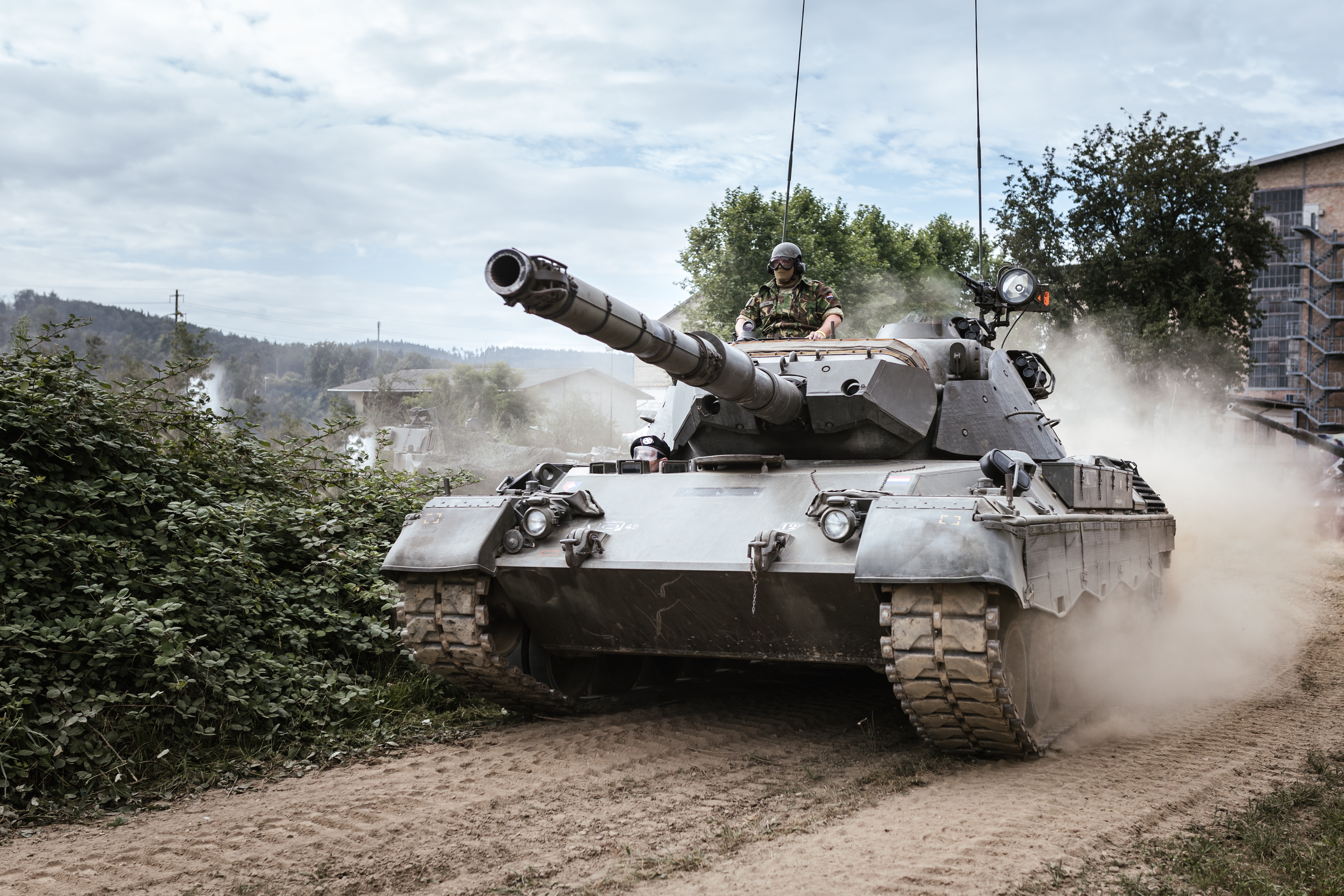Lets understand the topic by sanskritisarita:
1.Let's Dive into the Chaos:
The Middle East has always been a hotbed of drama and conflict, with country wars and power struggles shaping the region's history for centuries. From America's involvement in Afghanistan and Iraq to Israel's ongoing conflict with Palestine, tensions in the Middle East have had far-reaching consequences that have affected the entire world. But what are the real reasons behind these wars? Is it all about oil and power, or are there deeper religious and ideological motivations at play? In this blog, we'll take a closer look at the drama in the Middle East and explore the complex web of alliances, rivalries, and terrorist organizations that have turned the region into a powder keg. So grab your popcorn and get ready for a wild ride through the tumultuous world of Middle Eastern politics!
2.Why the Drama in the Middle East Matters:
You may be wondering, why should I care about all this drama happening thousands of miles away? Well, let me tell you, the drama in the Middle East has far-reaching consequences that extend beyond the borders of the region.
First and foremost, the conflicts in the Middle East have resulted in countless lives lost, both military and civilian. The toll on human lives is tremendous, and it's crucial to acknowledge the human impact of these wars.
Secondly, the instability in the Middle East has a direct impact on global politics and the economy. The region is home to some of the world's largest oil reserves, making it a major player in the global energy market. Any disruption in the flow of oil from the Middle East can have serious implications for economies around the world, causing inflation and affecting global trade.
Furthermore, the Middle East is a breeding ground for extremist ideologies and terrorist organizations. Groups like ISIS and Al-Qaeda have found fertile ground in the chaos of these conflicts, posing a threat not only to the region but also to global security. In conclusion, the drama in the Middle East matters because it affects us all. Whether it's the loss of innocent lives, the economic impact, or the spread of terrorism, the conflicts in the region have a ripple effect that extends far beyond its borders. It's imperative that we stay informed and engaged with the issues at hand, for the sake of peace and stability in the world. So buckle up, folks, because the drama in the Middle East is far from over!
3.What's Really Going On?
Alright, let's get down to the nitty-gritty and take a closer look at what's really going on in the Middle East. It's no secret that the region has been plagued by conflicts for decades, with various countries vying for power and control. But what are the root causes of these wars?
One major factor is the long-standing sectarian divide. The Middle East is home to diverse religious and ethnic groups, and tensions between them have escalated over time. Sunni-Shia rivalries, which date back centuries, have fueled much of the violence we see today. Additionally, the struggle for political power and control of resources has also played a significant role in the conflicts.
Another important aspect to consider is the influence of external powers. Throughout history, countries like the United States, Russia, and European nations have often intervened in the region, either directly or indirectly, for their own interests. These interventions have exacerbated tensions and further destabilized the region. Now, it's important to remember that each conflict in the Middle East has its specific dynamics and complexities. From the ongoing civil war in Syria to the Israeli-Palestinian conflict, each situation has its own set of causes and consequences. It's crucial to dig deeper and understand the nuances of each conflict to truly grasp what's going on in the region. In the next section, we'll delve into some of the specific country wars in the Middle East, shedding light on the key players, their motivations, and the impact of these conflicts on the affected nations and the world at large. So stay tuned, because there's so much more drama to unravel!
To truly understand the complex dynamics of Middle Eastern conflicts, it's essential to delve deeper into what's happening in the region. The Middle East has been plagued by conflicts for decades, and while each situation has its unique features, some common themes and factors underpin these conflicts.
Sectarian Divides: One of the fundamental elements shaping Middle Eastern conflicts is the deep-seated sectarian divides. The region is home to diverse religious and ethnic groups, and these differences have often led to tensions and violence. The most prominent sectarian conflict in the region is the Sunni-Shia rivalry, which traces its roots back over a thousand years. This divide has fueled much of the violence and turmoil seen today.
For instance, in Iraq, the Sunni-Shia divide played a significant role in the sectarian violence following the 2003 U.S. invasion. The country's Sunni minority, once favored by Saddam Hussein's regime, faced discrimination under the Shia-dominated government that followed, leading to a cycle of violence and reprisals.
Similarly, in Bahrain, the Sunni monarchy faces periodic unrest from the Shia-majority population, who have demanded more political rights and representation. This divide has contributed to a volatile political landscape.
Power and Resource Struggles: The struggle for political power and control of valuable resources, particularly oil, is another driving force behind Middle Eastern conflicts. Many of the region's countries are rich in oil reserves, making them valuable players in the global energy market. This has led to intense competition for control of these resources and the wealth they generate.
In Iraq, control over oil resources has been a central issue in the country's conflicts. The Kurdistan Regional Government (KRG) in northern Iraq has sought greater autonomy, partly driven by its desire to control its oil resources. This has brought it into conflict with the central government, resulting in tensions and violence.
External Interventions: The involvement of external powers has added another layer of complexity to Middle Eastern conflicts. Throughout history, countries like the United States, Russia, and various European nations have often intervened directly or indirectly in the region for their own interests. These interventions have frequently exacerbated tensions and further destabilized the Middle East.
For instance, the U.S. invasion of Iraq in 2003 toppled Saddam Hussein's regime but also unleashed a wave of violence and insurgency. The subsequent years of occupation and political maneuvering contributed to the fragmentation of the country and the rise of extremist groups.
In Syria, the ongoing conflict has attracted a multitude of external actors, each pursuing their interests. Russia's military intervention in support of the Syrian government, the U.S. backing of Kurdish forces, and the involvement of regional powers like Turkey have complicated efforts to resolve the conflict.
Country-Specific Conflicts: It's essential to recognize that each conflict in the Middle East has its unique dynamics and complexities. The ongoing civil war in Syria, the Israeli-Palestinian conflict, the Yemeni crisis, and other regional disputes all have distinct causes and consequences.
In Syria, the conflict began as a series of protests against the regime of Bashar al-Assad but evolved into a complex civil war involving numerous rebel groups, Kurdish militias, and international powers. The situation has been further complicated by the involvement of extremist organizations like ISIS.
The Israeli-Palestinian conflict is deeply rooted in historical narratives and claims to the same land. The struggle for sovereignty and control of Jerusalem, among other issues, has resulted in ongoing tensions and violence.
The Yemeni crisis is a result of a complex web of factors, including the Saudi-Iranian rivalry, sectarian divides, and struggles for power within the country. Yemen has become a battleground for various factions, further deepening the humanitarian catastrophe in the region.
4.Who's Involved in this Mess?
Who's involved in this mess? When it comes to the country wars in the Middle East, there's no shortage of players involved. The region has become a battleground for various countries and factions, each with their own agenda and alliances. Let's take a closer look at some of the key actors in this complex web of conflicts.
First and foremost, we have Saudi Arabia and Iran, two regional powerhouses locked in a bitter struggle for dominance. This is largely driven by their differing interpretations of Islam, with Saudi Arabia being a Sunni-majority country and Iran being predominantly Shia. Their rivalry has spilled over into conflicts in countries like Yemen, Lebanon, and Iraq, where they back different factions to gain influence and control.
Then there's the involvement of global powers like the United States and Russia. Both countries have strategic interests in the region, whether it's access to oil resources or countering the influence of their rivals. The United States has often supported allies like Saudi Arabia and Israel, while Russia has provided military assistance to the Syrian government in its fight against rebel groups.
But the list doesn't end there. We also have Turkey, which has its own ambitions for regional power and has intervened in conflicts like the Syrian civil war. And let's not forget about Israel, which has been involved in conflicts with its neighbors like Palestine and Lebanon. The involvement of these and other players in the Middle East country wars only adds more fuel to the fire. Their interventions not only complicate the conflicts but also have far-reaching consequences for the people and nations caught in the crossfire. In the upcoming section, we'll dig deeper into some of the specific country wars, analyzing the motivations and impacts of these actors. So get ready for a rollercoaster ride of power struggles, alliances, and the human cost of these devastating conflicts.
5.The Never-Ending Cycle of Conflicts:
The drama in the Middle East seems to be an endless cycle of conflicts, with no clear resolution in sight. Each conflict seems to be merely a thread in the complex web that holds the region hostage. From Yemen to Iraq, Lebanon to Syria, the battles continue to rage on, fueled by the agendas and ambitions of the various players involved.
One of the major factors contributing to this never-ending cycle is the ongoing power struggle between Saudi Arabia and Iran. Their rivalry, rooted in religious and geopolitical differences, has led to proxy wars in neighboring countries. Yemen, for instance, has been torn apart by a brutal war between the Saudi-backed government and Houthi rebels supported by Iran. This conflict has caused immense suffering for the Yemeni people, with no end in sight.
Another significant contributor to the never-ending cycle is the involvement of global powers like the United States and Russia. These countries have strategic interests in the region and are often invested in supporting their allies or countering their rivals. However, their interventions often exacerbate the conflicts rather than bringing about peace and stability.
The human cost of these never-ending conflicts is staggering. Millions of lives have been lost, countless others displaced, and entire nations left in ruins. The people of the Middle East have suffered for far too long, caught in the crossfire of power struggles and rivalries. It is heartbreaking to witness the devastating consequences of these conflicts on innocent civilians, who have often become pawns in a much larger game. In the following section, we will delve deeper into some of the specific country wars and shed light on the motivations and impacts of the various actors involved. It is essential to understand the complexities of these conflicts to foster a greater sense of empathy and to explore possible solutions. Stay tuned for our analysis in the upcoming section.
6.Shedding Light on the Consequences:
In this section, we will shed light on the consequences of the never-ending conflicts in the Middle East. The impact of these country wars has been devastating, leaving a trail of destruction and suffering in their wake.
One of the most significant consequences is the humanitarian crisis that has unfolded across the region. With millions of lives lost and countless others displaced, families have been torn apart, and communities shattered. The basic necessities of life, such as food, water, and healthcare, are scarce, leaving innocent civilians struggling to survive.
Furthermore, these conflicts have had a severe economic impact on the countries involved. Infrastructure has been destroyed, businesses have collapsed, and entire economies have been crippled. The road to recovery for these nations will be long and arduous, with limited resources and the constant threat of further violence.
Another consequence of these country wars is the rise of extremist groups and the spread of terrorism. In the chaos and instability, extremist ideologies find fertile ground to take root and thrive. This not only poses a threat to the affected countries but also to the international community as a whole. The consequences of the never-ending conflicts in the Middle East are far-reaching and complex. It is crucial for us to understand and acknowledge the toll they have taken on the lives of countless innocent people. In the next section, we will explore the motivations behind these conflicts, seeking to uncover the driving forces that have perpetuated this cycle of violence. Stay tuned for our insights in the upcoming section.
7.Will the Drama Ever End?
As we conclude our exploration of the country wars in the Middle East, one question lingers: will the drama ever end? It's a complex issue with no easy answers. The conflicts in the region are deeply rooted in historical, religious, and political tensions, making them incredibly difficult to resolve.
However, there is still hope for peace. It will require dialogue, compromise, and a commitment to finding common ground. International efforts, such as mediation and humanitarian aid, play a crucial role in facilitating a resolution. Additionally, addressing the root causes of these conflicts, such as poverty, inequality, and political instability, is essential for long-term stability.
While the road to peace may be arduous, it is not impossible. History has shown that conflicts can be resolved and nations can rebuild. It will require the collective effort of governments, organizations, and individuals alike.
In the meantime, let us not forget the human cost of these country wars. The millions of lives lost, the families torn apart, and the communities left shattered. They deserve our empathy and support as we strive towards a brighter future for the Middle East.
Thank you for joining us on this journey of understanding and awareness. Together, let us hope and work towards a world where peace prevails over conflict.
The Middle East, a region with a rich history and diverse cultures, has also been a hotbed of conflict and turmoil for centuries. Its intricate web of conflicts, rivalries, and alliances has often left the world on the edge of its seat. This article aims to delve deeply into the complex dynamics of Middle Eastern conflicts, shedding light on the multifaceted factors that contribute to the region's instability.
Historical Roots: To understand the complexity of Middle Eastern conflicts, one must trace their historical roots. The region's history is marked by the rise and fall of empires, the spread of religions, and the emergence of powerful dynasties. Ancient empires like the Ottoman Empire and the Safavid Empire have left a lasting legacy, contributing to the region's intricate tapestry of ethnic and religious diversity.
Religious and Sectarian Divides: Religious differences have played a significant role in shaping the conflicts of the Middle East. The schism between Sunni and Shia Islam, which dates back over a millennium, has fueled tensions in the region. In countries like Iraq, this divide has resulted in sectarian violence and political instability.
Nationalism and Identity: Nationalism and ethnic identity are powerful forces in the Middle East. The Kurds, for example, are a stateless nation spread across several countries, including Iraq, Iran, and Turkey. Their struggle for autonomy has been a source of regional tension and conflict. Likewise, the Israeli-Palestinian conflict is deeply rooted in competing nationalist narratives and claims to the same land.
Colonialism and Postcolonial Legacy: The legacy of European colonialism continues to influence the dynamics of Middle Eastern conflicts. The arbitrary borders drawn by colonial powers disregarded ethnic, religious, and tribal considerations, leading to tensions that persist to this day. For example, the Sykes-Picot Agreement, which divided the region between British and French spheres of influence, still affects the region's geopolitics.
Economic Interests: The Middle East's vast oil reserves have made it a focal point of global economic interests. Control over oil resources and the revenue generated from them has been a driving force behind regional and international conflicts. Countries like Saudi Arabia, Iran, and Iraq have wielded oil as both a source of power and a tool of influence.
Geopolitical Power Struggles: The Middle East has long been a battleground for superpower rivalries. During the Cold War, the United States and the Soviet Union competed for influence, often supporting opposing sides in regional conflicts. In recent years, Russia's involvement in Syria has added another layer of complexity to the region's geopolitical landscape.
Proxy Wars: Middle Eastern conflicts have frequently taken the form of proxy wars, where regional and international powers support opposing factions. In Yemen, for instance, the Saudi-Iranian rivalry has manifested in a devastating proxy war between the Saudi-backed government and Houthi rebels, further exacerbating the humanitarian crisis in the country.
Terrorism and Extremism: The Middle East has been a breeding ground for extremist ideologies and terrorist organizations. Al-Qaeda and ISIS are just two examples of groups that have exploited the chaos of the region to recruit and operate. Their activities have not only destabilized the Middle East but have also posed global security threats.
Humanitarian Consequences: The human toll of Middle Eastern conflicts is staggering. Millions of lives have been lost, and countless others have been displaced from their homes. These conflicts have left a trail of destruction, impacting the lives of ordinary civilians who bear the brunt of the violence.
Possible Solutions: While the complex dynamics of Middle Eastern conflicts are challenging to unravel, there are potential paths toward peace and stability. These include:
Dialogue and Diplomacy: Encouraging open and constructive dialogue among conflicting parties is essential for finding common ground and peaceful solutions.
International Mediation: The involvement of international organizations and mediators can help facilitate conflict resolution and negotiation processes.
Addressing Root Causes: Efforts to tackle poverty, inequality, and political instability can help address the underlying issues fueling conflict.
Conclusion: The Middle East remains a region marked by a web of complex conflicts, but understanding the historical, religious, and geopolitical factors at play is the first step toward finding solutions. It's imperative for the international community to support efforts for peace, while acknowledging the human cost these conflicts have imposed on the people of the region. The path to stability is challenging, but it is not insurmountable, and it is essential for the sake of peace and prosperity in the Middle East and the world at large.












